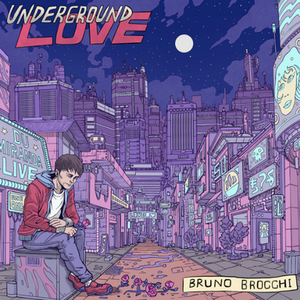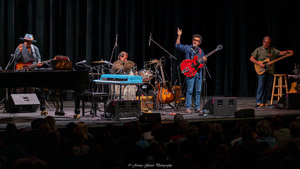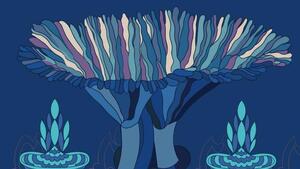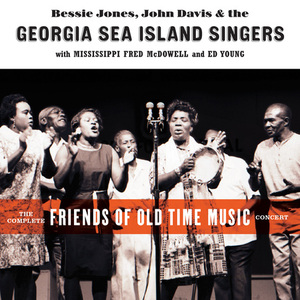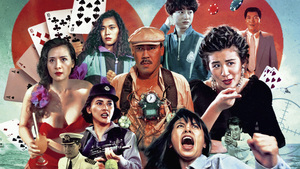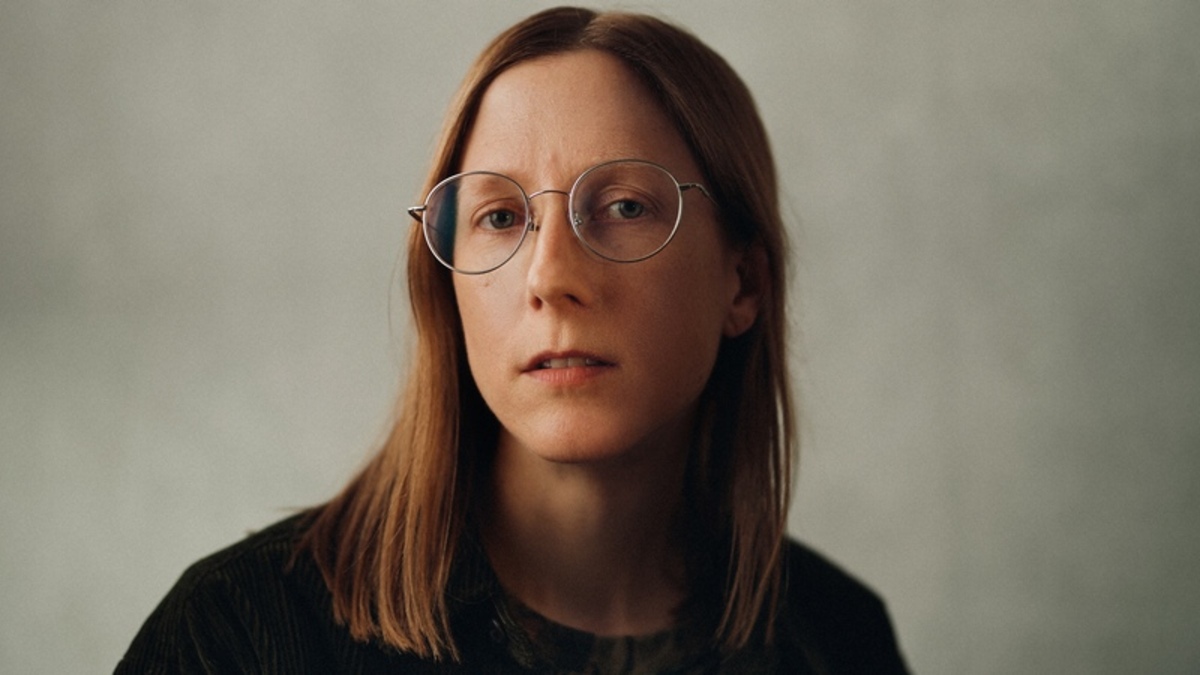
Ashley McKenzie
by Lily and Generoso Fierro
Queens of the Qing Dynasty opens in a stark hospital room in Unama’ki Cape Breton with nurses moving decisively around Star (Sarah Walker) a young woman who has recently ingested poison and is urged to drink an unnamed antidote from a straw placed in a dark brown bottle. She looks around with wide, slightly glazed eyes that appear to be simultaneously absorbing all of the encircling stimuli while also peering beyond into an imperceivable, alternate world. As we watch Star watch everything moving around her in this clinical setting and then respond in unexpected ways, we are propelled into an empirical mindset that director Ashley McKenzie sets forth and nourishes throughout her latest film.
Soon after, Star meets An (Ziyin Zheng), a student from Shanghai and a hospital volunteer who has been charged with keeping her company and watching over her during her hospital stay. In their first encounter, the two conduct a variety of litmus tests of conversation and expression to understand each other. An pretends to be a housewife preparing dinner. Star pretends to be the husband, and she abruptly ends the kitchen fantasy by picking up the main ingredient, a zucchini still raw, and taking a bite out of it. The two proceed to a chapel in the hospital, and time slows down as they probe and discover each other’s beliefs and perspectives, bringing their distinctive energies in phase.
The duo continues to align as An shares their fascinations with the Qing Dynasty’s concubines and private aspirations, and Star shares her past traumas and keen reactions to An and her environment. And, when An gifts a phone to Star, their understanding of each other flourishes, and they communicate their observations, hopes, and desires openly across multiple forms — text, video, and voicemail in addition to in-person conversation — and grant us, the audience, the ability to take in both of their ways of being through their varying methods of external expression.
Furthermore, in between their interactions with one another, McKenzie presents An’s and Star’s individual interactions with others: An with their friends in a nail salon as they discuss the differences between China and Canada; Star in an inpatient psychiatric hospital; An with their lover. These separate conversations and experiences deepen our understanding of both An and Star — why they have an affinity for each other and what could potentially lead to distance between them — without any explanatory dialog or structure, reinforcing the methodology of the film where words and actions are not used to explain internal states, but rather as manifestations of the changes and persistence of truths in Star’s and An’s existences as they relate to each other and as they progress in their lives.
With Queens of the Qing Dynasty, McKenzie invites us to study An and Star as individuals and as close friends. As we sift through the artifacts and observations they provide us in their behaviors and communication, we arrive at portraits of two unique and vital people vibrating with honesty and clarity, emerging from their surroundings and our current time. We had the privilege of speaking with Ashley McKenzie about her approach to writing Star’s and An’s characters and worldviews, the role of Unama’ki Cape Breton in providing cultural and historical context, representations of mental illness in cinema, and themes such as the complex relationship between technology and society that are emerging in her work.
• •
LF: After watching Queens of the Qing Dynasty, we were thinking about Mark Rappaport’s film, From the Journals of Jean Seberg, specifically, the analysis of Robert Rossen’s Lilith from 1964 where Jean Seberg portrays an institutionalized woman with a caretaker played by Warren Beatty. In Rappaport’s analysis, he brings up how film has often connected women’s mental illness with sexuality, be it a source of madness or a form of madness in and of itself. You make it very clear through Star’s own admission that she’s asexual. We feel that this could possibly be a response to cinema’s recurring portrayal of women’s mental illness and its relation to sexuality. Can you discuss your decision-making process surrounding Star’s declaration of asexuality?
AM: Maybe I’ll start back at the early stages of developing this idea — at that time, I was thinking about the representation of mental illness, specifically in women, in art. I wasn’t really focusing specifically on sexuality then, but the story of Star sort of emerged as part of a portrait series that I was beginning to develop that was looking at women that society may view as having an affliction of some kind. I wanted to write portraits that showed that these so-called afflictions could actually be seen as advantageous qualities. This was a guiding conceptual idea in the early stages of writing, and eventually, in developing these portraits, Star’s character began to materialize more and more, and when An’s character was introduced into the script, it became so large that it grew into its own film.
As I developed the piece on its own, I had this feeling that Star’s character is a very queer one in every sense of the word. I genuinely feel that she defies all of the normative expectations that the world puts on her, so that was something that I realized about her at a certain point, but not until after I had kind of written her character. When I stepped back, I had this moment when I was reading queer theory and noticed that much of it was reflected in Star. So, I was aware that all of that was happening, but I still had not consciously decided to make Star an asexual character — that was something that arose organically or subconsciously in the writing, but I think it does feed into those bigger ideas in queer theory in many ways. Much of my writing comes together in an organic way, so it’s hard to know the exact origins of some of the ideas. But, in post and in releasing the film, that aspect of Star’s asexuality has become more apparent to me, and as I read Angela Chen’s book on asexuality, I realized that I too was on the asexual spectrum. A lot of the things that were in the film became clearer to me after I made it, and in the end, some of the elements in my film were very intentional and some were subconsciously implanted.
LF: That makes sense because one of the things that I love about your film is that it has its own energy, and that energy feels very now, and I think that nowness comes from these organic and structured portrait elements that combine together very nicely and feel incredibly present.
AM: It’s interesting because I watched a trailer for Lilith this morning because I have not seen the film, but it reminds me so much of Splendor in the Grass, which was a film I really loved when I was growing up along with many of the other films from the 1950s and 1960s about repressed sexuality such as Nicholas Ray’s films. These films really spoke to me, but when I was watching the trailer for Lilith, it felt so different than now in terms of the dramaturgy. The inner-turmoil of those characters is so wrought, and I didn’t want Star to feel that way. I didn’t want it to seem like she is tormented on the inside because, to me, she actually seems like she is very clear in her intentions and has a lot of self-knowledge and composure. I think that most of what is out of sync for her is the relation between herself and the pressures that structures and institutions are placing on her. That is where I see the tension existing, and it feels even clearer this morning after watching the Lilith trailer and noticing how much of that film’s energy comes from angst.
GF: While your film is undoubtedly a contemporary one, it also has its own independent sense of time, but its title and An’s fascination with concubines is anchored in a very specific period of Chinese history. Did the fact that the Qing dynasty was the last imperial dynasty of China influence the film in any way?
AM: I think that the biggest influence was Empress Dowager Cixi, and it is more so her in that time period rather than any historical features of the Qing dynasty itself that left a big mark on the film, particularly on An’s character. She is this icon and symbolic figure. There is this matrix of other icons in the film like Marilyn Monroe, but for An, Empress Dowager represents someone who can find their self-power in a system that is not built for them to necessarily access power, and she’s able to do so without sacrificing her femininity. And perhaps, if you get into the history of it, that is not entirely true of her character, but just the idea of concubines that are able to end up in this position of power, or as An says in the film, “being able to expand your empire while keeping your nails long,” represents the possibility of strategizing how to attain some self-power without having to compromise femininity. This speaks to them a lot and Ziyin Zheng, who plays the role of An and who helped develop the character as a script consultant. For Ziyin, growing up watching television melodramas and soap operas about the Royal Palace and concubines was something very meaningful to their development and worldview and shaped the women whom they looked up to. So, An’s fascination with the concubines was coming from a very personal place for them.
I like the idea of how that could become a guiding star for each character and how they are able to see the world differently by looking at these Empresses at that time. I think the other distinctive thing about Empress Dowager Cixi — and maybe this does speak to the Qing Dynasty being the last imperial dynasty — is that she did break tradition a bit. She had a more open relationship with Western culture. She was the first member of royalty to have her portrait done, and she had an American painter [Katharine A. Carl] do her portrait. She also had connections to Theodore Roosevelt, so upon reflection, you can see how all of these details about her connection between East and West would make sense for An’s character and their own journey and the things that they are trying to seek in life.
LF: I did read a bit about how the Qing Dynasty was notably an era of change. The concubine system was simplified. There was unprecedented connectivity between East and West. And, eventually, at the Dynasty’s end, the Republic of China emerged. It does feel like the historic changes of the period inspire An’s character in a subconscious way, and perhaps are in the undercurrents of when Star and An first meet and go to a chapel in the hospital?
In that space, they explore conceptions of each other through ideas of good and evil. Star asserts that she thought An was evil. An sings of angels. And, the image of Christ watches them as they learn about each other. It’s a striking scene because we have the opportunity to see both characters trying to understand each other’s motivations and codes of ethics in a space dedicated to Christian faith, which has its own independent system of action, motivation, and judgment. Could you talk about how this chapel scene was conceived?
AM: More broadly, the chapel scene — before I get into the Christian worldview aspect of it — is, to me, a pivotal moment for the two characters where they are trying to understand how the other person communicates, learns, or expresses themselves, and that takes a bit of trial and error. It’s like rehearsing — seeing do you respond to this or that? I find it so interesting to see them engage in that way and then arrive at an effective model of care. Throughout the film, you watch Star engage with more institutionalized care, and that usually doesn’t arrive at anything effective, but that little bit of extra time and experimentation that it takes to try to meaningfully forge a connection with someone and achieve some attunement was what that chapel scene was all about. To me, that is where the essence of where care or connection can begin, so the chapel scene is part of an experimental process where I could allow them the space to explore each other’s responses back and forth.
Then, in terms of Christianity, I was coming at it from this place where Star has this very particular worldview, and An is able to recognize that and tries to understand it from their own perspective by bringing Celine Dion into the mix as their own sense of worship, which is directed more towards a diva or an empress or a concubine. I was trying to play with those two contrasting perspectives a bit, while also somewhat blowing up Christianity’s influences on both. The way that we conceptualize Star’s backstory is that she did have a Christian worldview that was imposed on her at home with her foster parent, and as thus, she has learned to process things through that narrative, but you can see how it breaks down in the scene. She knows that she does not really fit into this Christian framework, and as she processes An and other stimuli in her environment, she notices they also don’t fit into any part of it either, so the scene is also trying to chip into that structure and expose the flaws in it. Furthermore, at a certain point in the edit, I was thinking about conversion therapy and homophobia, and I thought that this film needs to do the opposite and try and workout and purge internalized homophobia and work towards a queering of everything, relationships and orientations, and converting in a reversed way.
LF: That idea of Christianity’s role as point of departure then re-envisioning is interesting. It makes me think back to Star’s bedroom in the inpatient hospital and the cross that is painted over with wall paint, but is still very much present over her bed.
AM: All of the small town hospitals are kind of like that here. Most of the small towns are Catholic, so when all of these buildings were constructed, it was during a time when religion was very entrenched in all aspects of life, and there hasn’t been a redesign since then. These buildings are generally just running their course, but there are still these remnants of that past era.
GF: The chapel scene does an excellent job in establishing that Star and An both have their own logic that the people, communities, and structures around them don’t understand. And yet, they understand each other, and we as the audience understand them too. Simultaneously, through the interactions that Star and An each have with others, we also come to understand the logic systems outside of theirs (Star’s social worker, An’s friends, An’s lover, Star’s guardian), and all of these different logics cohabitate in the space of Queens without any one becoming too dominant in influencing how we as the audience should interpret the film. How did you approach balancing all of these different ways of operating?
AM: A big part of my filmmaking process is tied to how much I am influenced by the people around me, so there is a lot of real life that makes its way into my films. I can often think back to a person or two or three that I may have in mind at some point when I am developing a character. I think that there is something about having a real life connection to draw on that hopefully pushes me to want to achieve a humanizing portrait. In a broad way, my approach to films is so linked to real life that I want to empathize and understand all of the characters and do them justice in their portrayals. How I try balancing all of that is by putting care and understanding into all stages of the process: from writing to shooting to editing and then getting lots of feedback and taking a long time to do everything and overthinking everything and getting perspectives that are different from my own and trying to be very critical about all of it myself while also knowing that nothing that I have just taken in will give me a very clear answer [laughs] and yet still going down that road of wanting to understand it all in order to represent something that feels honest in the end.
With Queens, I had a clear intention to build a deeper characterization in the writing stage. I very much wanted to focus on dimensionality with everyone, but specifically Star and An. It was my mission to develop those two characters and construct portraits and sculpt them in a way that they are complex and nuanced, so they have different sides, and you cannot easily pin them down.
Sometimes, I felt that in my past work, and in many films that I really love, that there is a certain pure, minimalist, distilled style that emerges in independent/arthouse films where the characters can become a bit elusive, and they don’t say much. In doing so, they can feel as though they are more sophisticated because they are giving you so little, and they are so mysterious, but I felt that I didn’t want to hide behind that convention. In previous interviews, I discussed this idea of an ellipsis. There is an author who brought up that the word “ellipsis” means something that hides behind silence, and I was feeling that in Werewolf and my past films that I was using ellipses in a way that, in developing this film, for me to use an ellipsis in certain scenes and moments felt like I was trying to hide behind something. So, I wanted to give these characters more space to say things and listen to what they say and try to respond to what they are giving me.
I was taking a risk in that things could have gotten messy, and they might have felt uncomfortable, and maybe things from a dramaturgy perspective were going to become awkward, but I believed that I needed to take that risk to arrive at something more honest and richer altogether.
LF: Those risks paid off well. Star and An are such singular characters who feel real because of how they express the complexity and conflicts in themselves and their situations. This is particularly clear when we hear about An’s reflections on Canadian society. We often understand a society by its treatment of its most vulnerable. Though the society in Unama’ki Cape Breton isn’t able to help Star get to a place where she can be independent, it is at least able to provide resources to her to keep her somewhat afloat. In the scene in the nail salon, An says that the Canadian government is “too generous,” and this is a prickly statement because this sentiment could form a stark division between them, as someone trying to leave an oppressive and desperate situation in China to become a new Canadian, and Star as someone who was born and raised in Canada. This assertion about the generosity of the Canadian government doesn’t prevent An from getting closer to Star, but this also is not an idea that they express to her, despite their openness with each other. How much of An’s (and also Ziyin Zheng’s) assessments of Canadian society, good and bad, as an immigrant do you feel plays a role in how An perceives Star?
AM: Because the film plays out in a condensed time period, I don’t think that it reaches that point in Star and An’s relationship where they may have to face more of the prickly realities that you are bringing up. I think the biggest difference that they would have to reckon with is the class separation between them. In some ways, it creates a magnetism between them, but I also think that it could bring about a certain degree of judgment. I do feel that, in the latter half of the film, there is a boundary that emerges as An gains more insight into what Star’s life is shaping up to become and recognizes that they have different visions for themselves.
What An first perceives in Star and is attracted to is her apparent freedom, which comes from her severe marginalization in society where she has been deemed as useless in a capitalist structure, which in turn positions her in this place where she has nothing to lose because she is seen as having nothing of value to contribute. Because An sees Star taking risks, they are attracted to that because they are afraid of taking certain risks as they are an economic immigrant coming from an oppressive place in many ways and seeking paths to better wellness, spiritually and in their mind and body, while also looking for a culture that is more affirming to them. As an economic immigrant, An has to be more careful about what they do because they could very easily be sent out of the country and not secure their residency. In addition, as an economic immigrant, they have connections to a family that may be supporting them financially, and they don’t want to do anything that could jeopardize those ties either.
That class difference between the two of them is the crux of what I believe is feeding into how An perceives Star. They really want to spend time with her. They really love how she can be free, but that gets tempered by class realities. Perhaps they can come to a more nuanced place and probably will by their experiences knowing Star, but I don’t think that they’re ready to sacrifice their position in society to couple in any kind of normative way.
GF: As we close our conversation, we want to discuss the distinctive roles that technology and mechanization play in your debut feature, Werewolf, and in Queens of the Qing Dynasty. In Werewolf, there are two distinctive machines that come to mind: the methadone distribution machine and the ice cream machine. We oddly recalled both during the scene in which Star is given an exercise to evaluate if she is fit to live in a group home and has to use a diagnostic tool that abstractly sets the boundaries of monitoring a stove, but is devoid of any explicit connection to a specific task in a realistic setting.
Altogether, these devices raised to us a theme in your films where technology and machinery accomplish tasks that easily can be handled by humans, but for a variety of reasons cannot or do not anymore. In Queens, this is most apparent in the phone An gifts to Star. The duo should be able to open a channel of communication without the phone, but it galvanizes the creation of the lifeline between them. This is an intriguing, nuanced perspective on technology, society, and humanity. Is this perspective something that you’re mindful of when you’re making your films? How does Unama’ki Cape Breton as your home and your setting influence this?
AM: This question gets into some things that I do see arising in my films, and I feel that I am exploring and using film techniques to try to work out this perspective. I believe that it is fundamentally important to contextualize these ideas in this place. For any symbol or motif, I like the idea that things don’t have to have a dominant meaning or that their meaning could shift based on context. This is something that often comes up in my work because I’m making films in an environment that is very specific to an island, and consequently, everything becomes so shaped by the place in a more pronounced way. So, when I think about using technology or different visual motifs in my films, I try to cast objects in a similar way that I cast performers and scout locations. Objects can be this other vehicle of expression, but, within the particular context of my daily life and the worlds being built in my films, an object’s certain symbolic meaning can shift.
Therefore, when I think about the phone in Queens and how An and Star could open up a channel of communication without the phone, I believe that’s true to some degree. But, in this context of being on an island where geography can be a quite a large barrier for some people if they don’t have access to transportation, having alternative modes of communication can be a critical lifeline, and that was something that fueled the writing of this film based on my personal experiences of how a phone could make a huge difference in people’s lives when they are many layers removed from physical connections. I also think that it’s interesting that people can reveal themselves and express themselves in different ways depending on what mode of communication they are using.
Also, I’m a big Jacques Tati fan, and he comes to mind when I think about technology and machinery. The portraits that he did about living in a mechanized society remind me that it is always more than just good or bad. I so greatly admire the way he approaches these issues complexly and comedically. That was always something that was going through my head as I was making Queens.
Another reference point that is admittedly not a unique correlation is field transference, which is a concept I’ve always loved. You know how in François Truffaut’s book on Hitchcock he describes how objects are exchanged as guilt transference in Hitchcock’s films? And, you see how Claude Chabrol does guilt transference with objects in his work as well? This is an idea that I have internalized, so, for me, if a character is going to exchange an object, they are going to be transferring more than just the object itself because they’ll subliminally package some other things into the mix. That said, the phone doesn’t quite operate as a guilt transference in this context, but I do think there is something more than what is on the surface because of that notion.
Queens of the Qing Dynasty opens at the Metrograph in New York City Friday, May 5, 2023.
Featured photo of Ashley McKenzie by Calvin Thomas.

